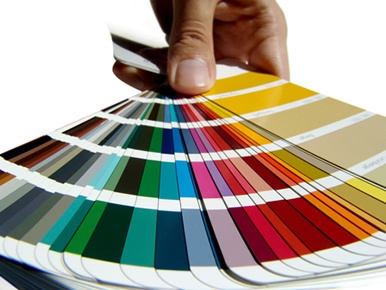If you are thinking of selling your home and want it "show-ready", but you lack decorating skills, fear not! Unbeknownst to many, designers don’t follow a secret rule book. They do, however, follow some basic tried and true guidelines and principals. According to Houzz.com, here are 7 key decorating tips to make any room better:
1. Pick the paint color last.
You want the color that best complements your upholstery, artwork, rug and whatever else. You can pick that color only if you have decided on the stuff that will actually be in that room.
2. Give your furniture some breathing room.
Resist overcrowding a room. Gracious living means space to maneuver with ease. This is really great news if you are working with a tight budget. You don’t need to fill up a space with lots of furniture.
3. Hang artwork at the right height.
Galleries and museums hang artwork so that the midline (center) of each piece is 57 inches to 60 inches from the floor. (The average human eye level is 57 inches.) And you should do the same.
If you’re not sure, take a picture. It’s remarkable how much a photo can reveal. Print it out or use Photoshop or an app to draw on the photo. This can give you a sense of whether a larger or smaller piece of art is needed or a tall plant might be best to fill a vacant spot.
4. Know how to arrange furniture on a rug.
There are basically three ways you can arrange furniture on your rug.
All on: The rug is large enough to place all of the furniture legs on top of it. This creates a more luxurious feel. For this, bigger is better. Just be sure to leave at least 12 to 18 inches of floor surface on all four sides of the rug’s borders.
All off: If you have a small room, keeping all legs off the rug is a great cost-effective choice. You don’t want to pick too small a rug, though, or it may look insignificant, like an afterthought. The rug should appear as though it could touch the front legs of each of the seating pieces. This approach is best suited when you’re layering a pattern over a larger solid or textured rug.
Front on: Put just the front feet of all your seating pieces on the rug to tie the arrangement together visually and create a well-defined space while lending a feeling of openness.
5. Resist the urge to be too theme-y.
For example, the Cape Cod look is a very popular request. You know the hallmarks: beadboard, a blue and white nautical palette, some sailboat paintings. But this has been done so many times. Try something like a coastal vibe that is achieved through a palette, artwork and materials that give the effect without drawing on the obvious clichés.
6. Create a focal point.
There are leading roles and supporting cast members in any production. The same holds true in design. Choose your star and make it the focal point to anchor a room. Allow other items to take a secondary role. Don’t ask everything to have a leading role; it will just result in visual noise.
7. Vary the scale.
What looks good in the store may look like an elephant in the room when you bring it home. Or it’s too tiny to be of any significance. So always vary scale and proportion.
If you’re a seller who has been wondering if it might finally be time to sell, email us at concierge@lizmoore.com, or click below, and we can prepare a complimentary analysis of market value for you – you just may be pleasantly surprised.
Are you interested in hot real estate topics, tips and trends?
Click below to subscribe to our blog!
Tags:
Sellers

